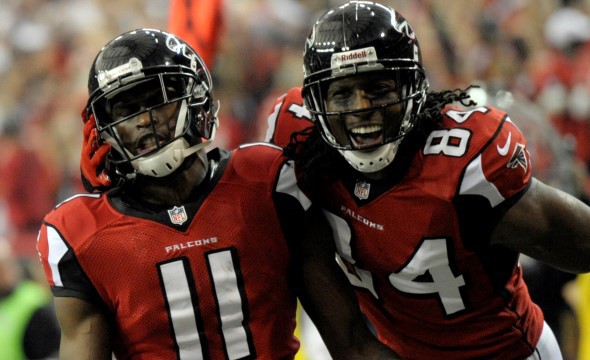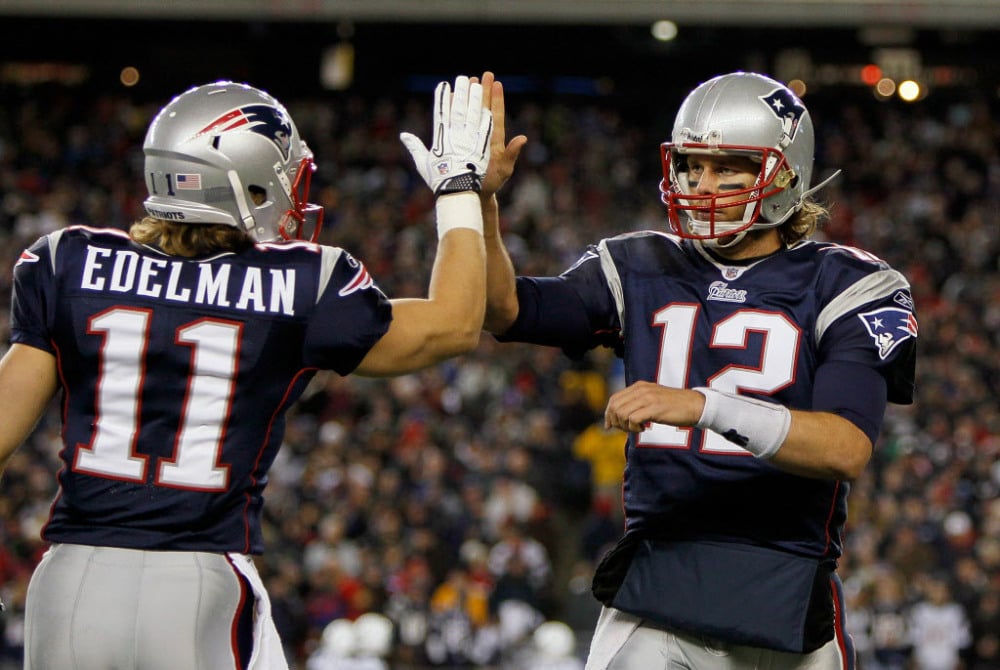Game script is such an important piece of the daily fantasy football puzzle that I want to use a few articles to explore some of the different nuances, starting with this piece. Generally speaking, if you can predict how a game is going to play out, it’s easy enough to figure out which players are going to be in the best positions to succeed from there.
There are also conventions we’ve come to accept (and which can be tested through Fantasy Lab Trends); for example, teams that are losing will throw the ball more. I touched on this a little bit on a previous article about situational pace, but taking a general perspective, this convention is true. Efficiency and volume are two different things, though, and QBs whose teams are up big in a game are probably responsible for the score being what it is.
So how about what you might consider primary receivers? Almost by definition, these players depend on sheer volume to generate value. You would expect that maybe game script would have more effect on these players since they are likely to be pulling in fewer receptions when their team is leading comfortably.
On FanDuel, there is only half a point awarded per reception, so it’s not as surprising to see WRs who were averaging 10 or more targets coming into a game exceed value when their team is favored by five or more points:
Average Targets is 10+ and Favored By five or more, FanDuel:
I think it’s pretty surprising to see these players still returning value on DraftKings, which is full point PPR.
Average Targets is 10+ and Favored By five or more, DraftKings:
Looking back at the two most lopsided scores of Week 1, Kendall Wright and Brandon Marshall both exceeded value despite having what we would conventionally deem a negative game script for receivers. The Jets and Titans both won their Week 1 contests by three or more touchdowns. Neither player quite fits the 10+ average targets per game criteria, but they are still the top options in the passing game for their teams.
To me, it kind of goes back to this – if you’re getting blown out, why are you getting blown out? Probably because you can’t stop the other team from doing what it wants to do on offense. What does the other team want to do on offense? Feed the ball to their best players.
You’d always like to have the opportunity for a couple extra receptions, especially on DraftKings, and that opportunity does go down in a blowout – but the likelihood that the player made it into the end zone earlier in the game increases. On DraftKings, here’s the breakdown of 20-point performances by WRs who were averaging 10+ targets entering a game:
| Filter | % of 20+ Point Games |
| No Filter | 44.5% |
| Favored By 5+ | 50% |
The last thing to test is whether the Plus/Minus bump is specific to highly targeted WRs or if it applies to all WRs in general:
| Filter | +/- Any Spread | +/- Favored By 5+ |
| Avg 0-7 Targets/Game (DK) | -0.13 | -0.24 |
| Avg 10+ Targets/Game (DK) | +0.70 | +1.17 |
| Avg 0-7 Targets/Game (FD) | -0.14 | -0.13 |
| Avg 10+ Targets/Game (FD) | +0.57 | +1.44 |
Receivers who were not the focal point of the passing offense did not get a bump from being comfortably favored to win. If you think about how blowouts work in the NBA, let’s say the Warriors jump out to a huge lead against the 76ers. Steph Curry scores 20 in the first half and then sits most of the second half. Someone like Leandro Barbosa then comes in and has the opportunity to rack up some garbage time points as the centerpiece of the second-unit offense.
If you think about how blowouts work in the NFL though, it’s different. If the Titans jump out to a big lead, it’s probably because the opponent has been repeatedly burned by the primary option, Kendall Wright, rather than the secondary option, Justin Hunter (to the chagrin of many Twitter users everywhere). But when the team goes into “Big Lead Mode,” they just stop throwing, so there is no garbage time production for the secondary receivers to be gained. Very generally speaking, WR1-WR5 are all at the same disadvantage at that point.
Obviously, the NFL is unpredictable and heavy favorites don’t always do what they’re supposed to. If one of these games stays competitive through four quarters, you might miss out on a top option that you faded due to fear of game script. Most people understand that risk and are okay with it. These trends I just ran say don’t be afraid of success, even with heavily targeted WRs in lopsided games.







